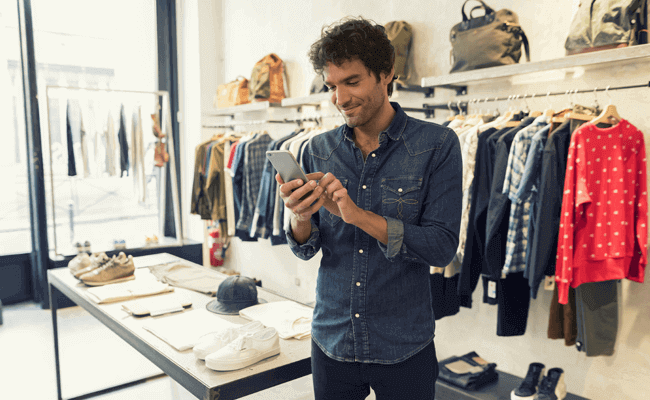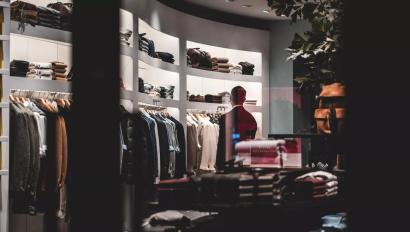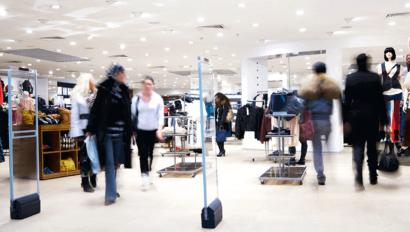The Truth Behind Common Retail Loss Prevention Myths

Retailers lose billions annually to preventable retail crime. In 2020, the average store faced losses of nearly $6,000, adding up to $258 million industry-wide. To stay profitable, it's essential to understand and address retail loss prevention myths while implementing effective strategies to minimize shrinkage.
Much of these losses are avoidable. Sure, saying you’re going to completely stamp out shoplifting forever isn’t realistic. However, you can curb crime by keeping tabs on potential security threats and opportunities, implementing high-performing systems, and educating your people.
Part of educating yourself and your staff is abandoning old perceptions to embrace new facts. We’ll debunk fallacies and give you our recommendations on how to help prevent loss prevention in retail.
Myth #1. Theft is the main cause of retail shrinkage.
Multiple factors result in retail shrinkage—that is, lost inventory. They include:
- Employee theft
- Shoplifting
- Administrative errors
- Returns fraud
- Vendor fraud
- Damage
- Cashier error
You can calculate inventory shrink with the equation: Inventory Shrinkage = Recorded Inventory – Actual Inventory
Over one-third of shrink is external, with causes like shoplifting and Organized Retail Crime (ORC). Stores lose, on average, $559 per shoplifting incident, according to Forbes.
To mitigate shoplifting, consider rearranging your store so you have visibility into your inventory and how customers circulate. A security system will be a significant asset to curb retail theft.
Also, be mindful of returns fraud. This happens when someone steals something and returns it for cash. They could also buy something, use it, and return it for a refund deliberately. For every $100 in returned merchandise accepted, retailers lose $5.90 to return fraud, according to Fitsmallbusiness.com.
Reduce the chances of returns fraud by revising your store’s return policies and training your employees to spot signs of fraud.
Myth #2: We upped our security. We should be okay.
You may have implemented or upped your security, but is it the right kind of security? For example, you may have cameras, but are they performing at the highest possible level to help you stop crime? IP cameras can provide sharp, detailed imagery at resolutions of 1080p or greater. You can easily spot someone sneaking an item into a bag or peeling off an important label.
Beyond “standard” crimes, your retail shop security systems must be able to handle today’s issues. Now that everyone is wearing face masks for the foreseeable future, how will you identify suspicious people? The best kind of security system will identify criminals through face masks by screening for their hair, eye color, etc. When you look for security with facial recognition capabilities, ask if the technology can identify through face masks.
Don’t forget about internal culprits. It may be hard to believe that your long-time employee or fellow assistant manager could be stealing from your store. The truth is that 30 percent of business bankruptcies are due to employee fraud. Organizations lose, on average, over a thousand dollars per dishonest employee.
To pre-empt internal crime problems:
- Employ a thorough onboarding, screening, and background check process. Personality profile testing may be useful.
- Use a POS system to require logins with each transaction
- Keep a log of activities
- Mix up staff so that the same group isn’t together all the time, particularly for opening and closing
Myth #3. We’re chronically understaffed, which makes effective loss prevention and monitoring harder.
Modern retail security systems, like remote monitoring and thermal screening technology, can fill staffing gaps while ensuring comprehensive loss prevention. These systems provide 24/7 surveillance and proactive responses to potential security threats.. For example, remote access control services will secure your facilities whether you’re onsite or not. This is useful if you’re working remotely and an intruder makes an after-hours “visit” or if you’re worried about staff forgetting to lock up after the night shift.
Many facilities have an in-person staff member to check a person’s temperature before they enter. What if you don’t have enough staff? If you choose your systems wisely, they’ll have thermal screening technology that detects temperatures above 100.4°F—the CDC’s recommended threshold. Certain retail store security systems can also identify whether someone is standing upright or fell due to illness.
What about security when you’re off the clock? Perhaps you have all the right equipment but would feel better knowing you had human eyes keeping a watch. Thankfully, today’s retailers can deploy remote monitoring systems. Certain systems will have a team of offsite trained security professionals keeping 24-7 surveillance every day of the year.
If an intruder trips your retail alarm system, these offsite security professionals will easily access your store’s live video feeds and spot a crime in progress. They can then verify the footage to law enforcement and the authorities can stop the crime.
Myth #4. We’ve implemented surveillance technology and provided the requisite training to our staff on retail loss prevention. We can cross “security” off of our to-do lists.
The pandemic caused an upswing in security threats for over two-thirds of retailers, says the National Retail Federation. We can easily come up with a list of reasons for this—unstable financial situations, limited access to resources, and general feelings of frustration are a few.
On a positive note, with unpredictable times comes heightened awareness and innovation. Over half of retailers are allocating additional technology resources and capital specifically for retail loss prevention. Capabilities like biometric screening, motion detection, and alarm activation can catch even the smallest signs of suspicious activity.
While excellent security technology can do a lot of heavy lifting, you also need to rely on staff members who are aware and conscientious. Walk your employees through:
- All of the ways internal employees and external visitors can shoplift and commit theft and fraud
- How to detect intruders with a mask, or verify a ‘crime-in-progress’ for the police
- How to monitor the store when they’re offsite, or how to secure the store when they realize they’ve forgotten to lock up
Enlist Proactive Retail Loss Prevention Services
While it seems like retail security threats are more pervasive than ever, solutions are more prominent than ever as well. Being well-informed about retail loss prevention is about more than decreasing the number of shoplifting incidents on a Tuesday. It’s about embedding safety and security into your retail culture.
The result is a protected, reliable employer that you and your staff can consistently return to day after day and be proud to work for.
Protect Your Retail Business with Expert Retail Loss Prevention Solutions
Let us help you prepare a plan that makes sense for your specific retail security and retail loss prevention needs to keep your business, customers and staff secure and safe. Reach out to us for additional information, and to set up your consultation with an expert in the retail security industry.
Disclaimer: By using the Blog section of this website (“Blog”), you agree to the terms of this Disclaimer, including but not limited to the terms of use and our privacy policy. The information provided on this Blog is for information purposes only. Such information is not intended to provide advice on your specific security needs nor to provide legal advice. If you would like to speak to a Security representative about your specific security needs, please contact us.























